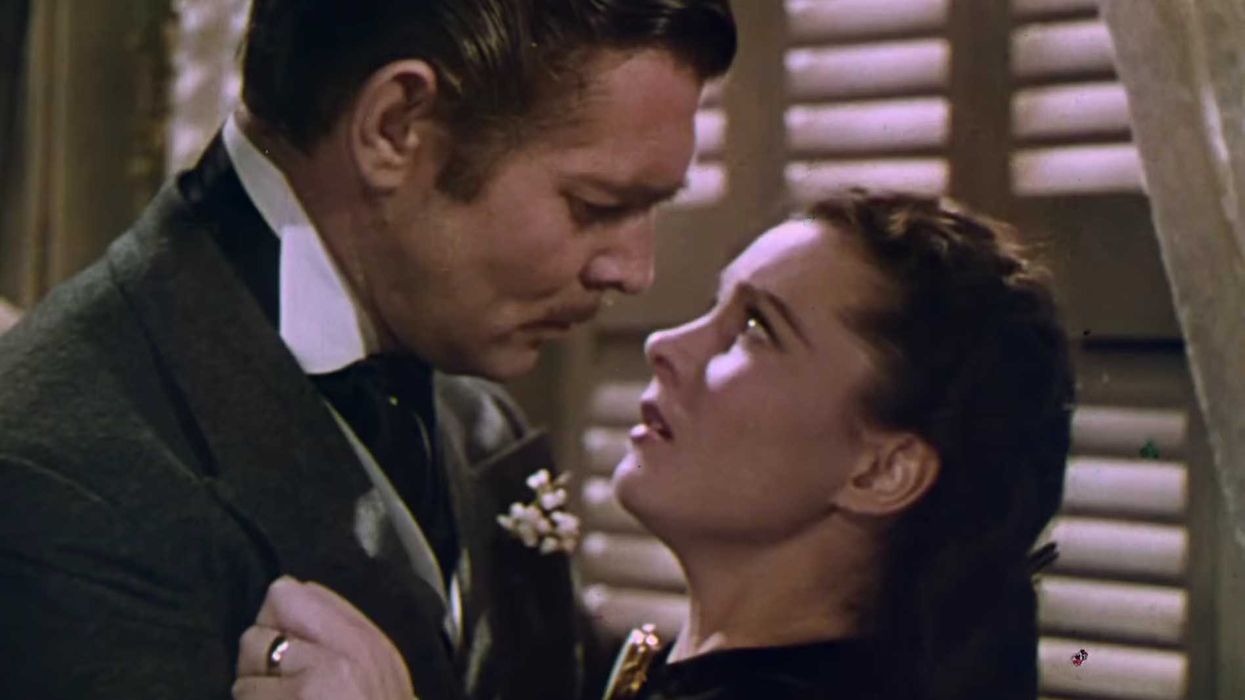45 creative but effective ways to respond to someone saying 'I hate you'
"From comedy to empathy to neutrality, each response has its benefits."
Two people engaged in a verbal disagreement.
Throughout a person's life, there will be many moments that lead to disagreements. Sometimes these mini conflicts escalate, and emotions can get heated. They start as a simple dialogue, then things suddenly evolve into intense, emotional outbursts with very aggressive language.
Navigating this space can be complicated. Some people want to avoid escalation at all costs. Others may choose to dump kerosene on the fire. Whatever your personal choice, these are some fascinating and often clever responses for when someone says, "I hate you."

A new Reddit thread on r/AskReddit posed an unfortunate yet valuable question: What's the best response to "I hate you?"
Redditors offered a range of helpful responses. Sometimes the feedback was humorous, others offered a little kindness, some were neutral, and even more tried to be loving. Each comment was categorized into the themes of diplomatic, vulnerable counter moves, mic-drops, and classic movie comebacks. These are some of the favorites.

Diplomatic (Measured, conflict-cooler)
People who remain level-headed can usually find a strong position when handling a problem. A 2023 study in the National Library of Medicine revealed that "emotional flooding" undermines problem-solving. Preventing high arousal preserves reasoning and makes repair possible afterward. Looking to avoid escalating the situation, people might choose a more measured response in the hopes of cooling down a heated moment. These are some of the more diplomatic responses Reddiors came up with:
"You're entitled to your opinion."
"Thank you for bringing that to my attention."
"Cool"
"I understand."
"Okiedokie"
"Great that is your choice."
"Oh, and?"
"Cool, thanks for letting me know."
"Oh ok then."
"Hate is a hard emotion to work through."
"Good to know."

Vulnerable counter moves (instead of matching aggression, a calm, compassionate, empathetic response)
Sometimes, a compassionate, empathetic response is all that's needed. One 2025 study in the National Library of Medicine showed that cultivating compassion leads to more constructive responses and lower retaliatory behavior. Just look at some of these calm comebacks by Redditors:
This person was reflective: "I hate me too."
This person decided to acknowledge and appreciate: "Ok, thank you."
This was a thoughtful response: "If you really hated me, you wouldn't even spend the energy to tell me."
This comeback was a bit dismissive: "Cool and carry on with your life"
Another offered a heartfelt reminder: "When my son was 5 years old he told me 'I hate you.' I responded: 'That's okay. Because I love you enough for the both of us'"
A clever way to remind people it's a hurtful thing to say is to offer, "Damn, even my alarm clock is nicer to me."
This could be interpreted as sarcastic, but it lands better if it's honest: "I hate that you hate me."
A simple self-deprecating response can stop them in their tracks: "Get in line."

Mic-drops (Sharp, clever, final - leaving attacker speechless)
Many people hope to be clever when facing one of these random moments of verbal crisis. Jokes are a powerful tool that can be used for good or just to be funny. A 2024 study in Springer Nature Link showed that a well-placed joke not only lightens the mood but can help a person think more clearly. These are some of the best mic-drop comebacks that Redditors had to offer:
"So that's a no?"
"Sorry, who are you?"
"I'll live."
"You'll get over it."
“chicken butt”
"Whew, that's a relief!"
"Cool and carry on with your life"
"Oh, that’s cute. Did you rehearse that line in front of a mirror?"
"Well your mother loves me. She also owes me ten bucks"
"Hate me quietly."
Perfect! One less person I have to pretend to be nice to!
"Meh"
"I have a boyfriend"
"Hating me isn't going to make your dad love you"
"Still... you gotta pick a number and stand in line... just like everyone else!"
"It’s your party you can cry if you want to."
"A condescending 'aww'”

Classic movie comebacks (Cinematic, humorous, written by the professionals)
When seeking a perfect response to an outrageous statement like, "I hate you," sometimes the best response should be left to the professionals. Writers can spend endless hours crafting a great sentence or one perfect response. Examining past cinema where characters found themselves in this type of moment reveals some hilarious and poignant retorts:
Obi-Wan shared a heartfelt and highly dramatic moment in the 2005 hit movie Star Wars: Episode III — Revenge of the Sith, "You were my brother, Anakin! I loved you!"
If you haven't seen it, I highly recommend the 1998 movie, The Big Lebowski, by the Coen Brothers. This quote was offered by The Dude, “Yeah, well, you know, that's just, like, your opinion, man.”
In the 1989 comedy When Harry Met Sally, Harry responds comedically, "How do you know?"
Ryan Gosling captured this cute moment in the 2004 movie The Notebook as the character Noah, saying, "You do?"
In the 1989 mega-blockbuster movie, Back to the Future Part II, Michael J. Fox's character Marty tricked Biff into driving into a manure truck and came back with this clever reply, "Well, I hate manure."
The beloved movie from 2001, The Princess Diaries, had Lilly saying, "You don't hate me. You're just afraid I'll tell you the truth."
One of the most iconic lines of all time was fashioned in the 1939 classic Gone with the Wind where Rhett Butler said, "Frankly, my dear, I don't give a damn."
In the 2004 movie Mean Girls Cady had a direct and powerful retort, "No, you don't."
One Redditor shared a favorite from the hit show Mad Men, where Don Draper said, "I don't think about you at all!"

What the professionals suggest doing when encountering strong, negative feedback
Experts agree that handling aggressive people using hostile language requires skill and patience. A 2024 experimental study published in the journal Communications Psychology suggested that a simple pause lowers the chance of immediately reciprocating with something worse. Short pauses break the "matching aggression" cycle. A 2022 study in the National Library of Medicine found that a genuine attempt at repair, like "I'm sorry," can help stop a downward spiral. It found that the ability to repair relationships was more important than the absence of conflict.
But what about dealing with strangers or less intimate relationships? Science suggests people are best served in handling those conditions through de-escalation. A 2022 study in the National Library of Medicine found that a soft tone offering choices with a non-threatening posture reduced escalation. A 2024 study in Science Direct found that during simulated strategies, using specific lines and postures helped people act under stressful situations. People who practiced navigating these types of encounters felt more confident in their abilities should an episode arise.

Dealing with an overly aggressive person can be uncomfortable. Scientific studies demonstrate that attempting to pacify the situation is more productive than escalation. Although many of the Reddit responses were clever and funny, if you want to resolve or end a conflict, provocation is less likely to be the winning strategy.
